Applied Mathematics
Vol.4 No.1(2013), Article ID:27091,3 pages DOI:10.4236/am.2013.41004
An Extension of the Poincar’e Lemma of Differential Forms
Department of Mathematics and System Science, National University of Defense Technology, Changsha, China
Email: tzymath@gmail.com
Received October 30, 2012; revised November 30, 2012; accepted December 7, 2012
Keywords: Differential Forms; Poincar’e Lemma; Domain Deformed to Every Point
ABSTRACT
This paper is to extend the Poincar’e Lemma for differential forms in a bounded, convex domain [1] in Rn to a more general domain that, we call, is deformable to every point in itself. Then we extend the homotopy operator T in [1] to the domain defromed to every point of itself.
1. Introduction
In [2], we have the Converse of the Poincar’e Lemma:
Lemma 1.1. Let U be a domain in 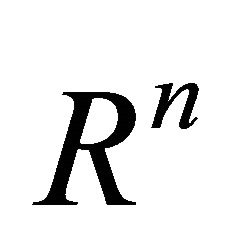 which can be deformed to a point P. Let ω be a (p+1)-form on U such that
which can be deformed to a point P. Let ω be a (p+1)-form on U such that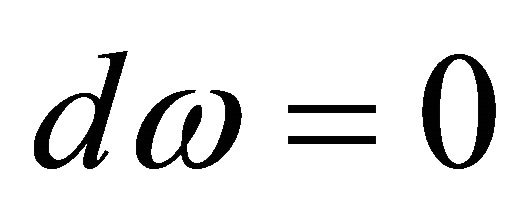 . Then there is a p-form
. Then there is a p-form 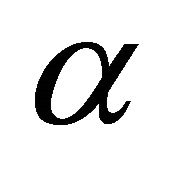 in U such that
in U such that
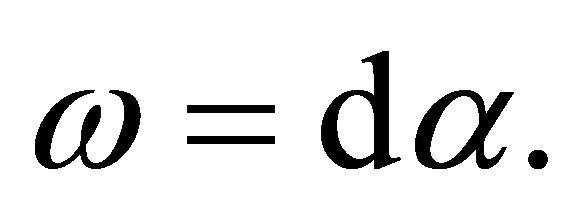 (1)
(1)
And in [1] we have Lemma 1.2. Let D be a bounded, convex domain in . To each
. To each 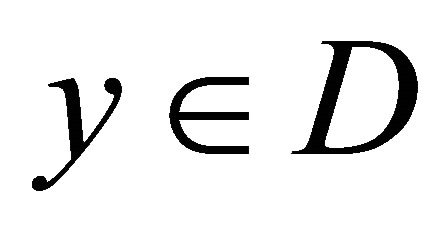 there corresponds a linear operator
there corresponds a linear operator  defined by
defined by
 (2)
(2)
and the decomposition
 (3)
(3)
holds at any point y in D.
In this paper, we extend the results of both of them. First we extend the bounded, convex domain D to the domain that deformed to every interior point. Then we not only gain that the closed form is the exact form, but every form can be decomposited to two parts where one of them is an exact form and another is a form related to the exterior differential of the form.
2. Preliminaries
It’s well-known that differential forms are the generalizations of the functions and have been applied to many fields such as potential theory, partial differential equations, quasiconformal mappings, nonlinear analysis, electromagnetism and control theory. First, we introduce some notations and preliminaries about differential forms. Let U denote an open subset of  and
and . Let
. Let  denote the standard orthogonal basis of Rn.
denote the standard orthogonal basis of Rn. 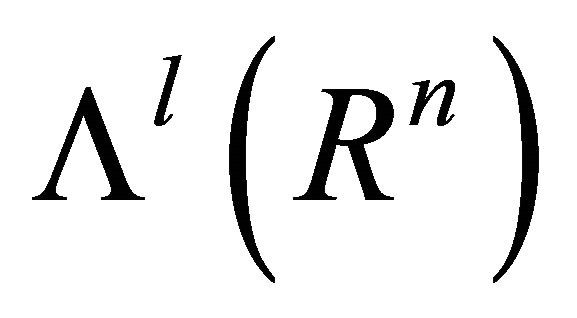 is the linear space of l-covectors, generated by the exterior products
is the linear space of l-covectors, generated by the exterior products , corresponding to all ordered l-tuples
, corresponding to all ordered l-tuples  . The Grassman algebra
. The Grassman algebra  is a graded algebra with respect to the exterior products.
is a graded algebra with respect to the exterior products.
A differential l-form ω on U is a Schwartz distribution on U with values in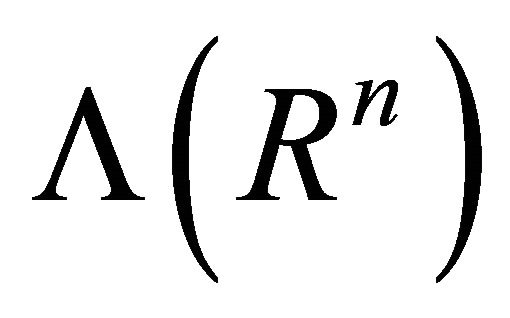 . Let
. Let 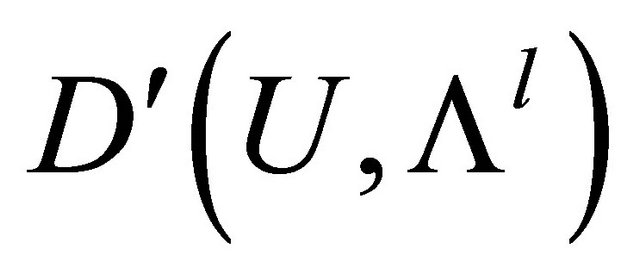 denote the space of all differential l-forms and the class of infinitely differentiable l-forms on U by
denote the space of all differential l-forms and the class of infinitely differentiable l-forms on U by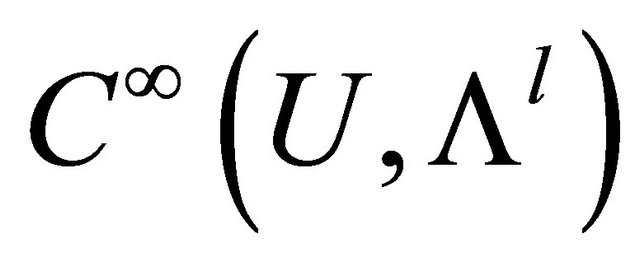 .
.
Then we define the mapping f* for a smooth mapping f on U into V, where U is a domain in 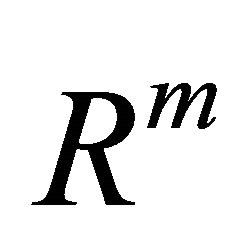 and V is a domain in
and V is a domain in , that is
, that is
 (4)
(4)
We denote by  the coordinates of Rm and by
the coordinates of Rm and by  the coordinates of Rn. Then we can write
the coordinates of Rn. Then we can write
 (5)
(5)
to show that the point with coordinates x is transformed by f to the point with coordinated y. The function are smooth. Now we define the map f* taking l-forms on V to l-forms on U:
are smooth. Now we define the map f* taking l-forms on V to l-forms on U:
 (6)
(6)
And there are basic properties for the mapping  we’ll use in the following statement.
we’ll use in the following statement.
Lemma 2.1. If ω is a l-form on V, then
 (7)
(7)
Lemma 2.2. If  and
and , then
, then
 (8)
(8)
More essential properties for  can be found in [3]. More preliminaries of differential forms and their applications can be found in [1-15].
can be found in [3]. More preliminaries of differential forms and their applications can be found in [1-15].
Then we define another important mapping:
Definition 2.1. Given a function  is a continuous for (x, u) [3]. We call a domain U is deformable to a point p if there exists
is a continuous for (x, u) [3]. We call a domain U is deformable to a point p if there exists  such that
such that
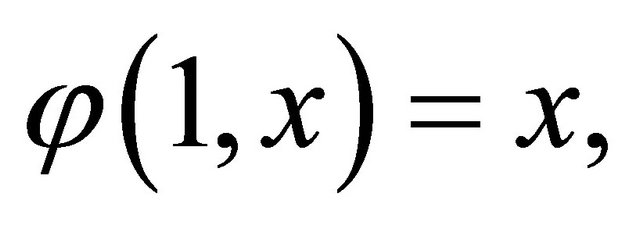 (9)
(9)
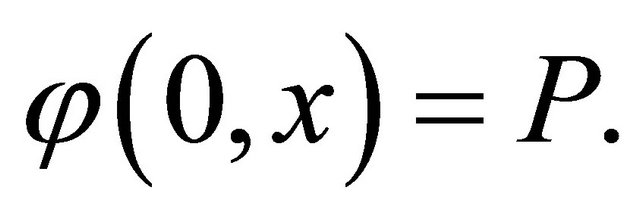 (10)
(10)
Then we can analogously define that a domain is deformable to any point , and denote the function
, and denote the function 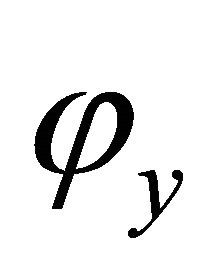 as
as 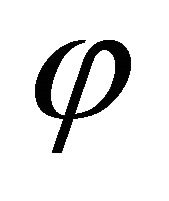 for every y.
for every y.
3. Main Results and Proofs
First, we introduce the “cylinder construction”. Let U be a domain in 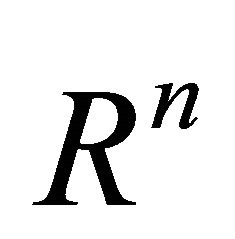 that is deformable to any
that is deformable to any 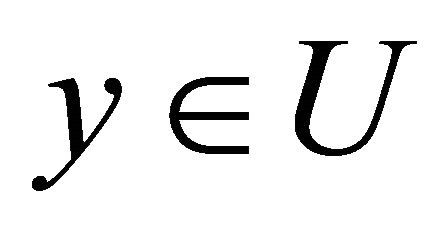 just like we have defined. We denote by [0, 1] the unit interval on the t-axis and consider the cylinder or product space
just like we have defined. We denote by [0, 1] the unit interval on the t-axis and consider the cylinder or product space 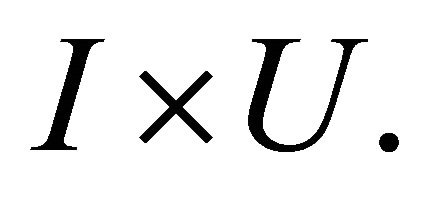
This consists of all pairs (t, x) where  and x runs over points of U. We point out the two maps which identify U with the top and bottom of the cylinder, that is
and x runs over points of U. We point out the two maps which identify U with the top and bottom of the cylinder, that is
 (11)
(11)

Thus
 (12)
(12)
For example, to form  where ω is a form on
where ω is a form on , we simply replace t by 1 wherever it occurs in ω (and dt by 0 correspondingly). Now we form a new operation
, we simply replace t by 1 wherever it occurs in ω (and dt by 0 correspondingly). Now we form a new operation 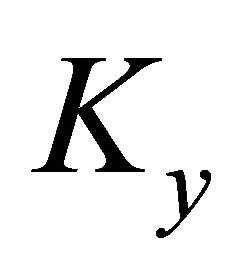 for any
for any 
 (13)
(13)
 is defined on monomials by the formulas:
is defined on monomials by the formulas:
 (14)
(14)
 (15)
(15)
and on general differential forms by summing the results on the monomial parts. Here is the basic property of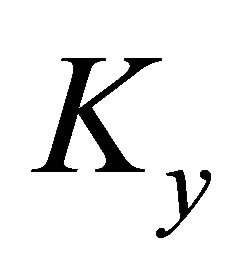 :
:
Lemma 3.1. If ω is any (p+1)-form on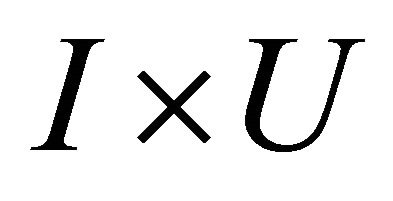 , then
, then
 (16)
(16)
Proof: We only need to check this for monomials.
Case 1. 
We have 
 (17)
(17)
 (18)
(18)
But  So the formula is valid .
So the formula is valid .
Case 2. 
First notice  Next we have
Next we have
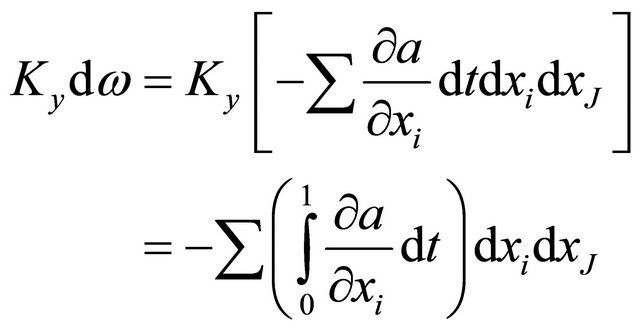 , (19)
, (19)
 (20)
(20)
So the formula works, again.
We can easily get the following conclusion:
Lemma 3.1. For the mapping , the boundary conditions may be interpreted in terms of the
, the boundary conditions may be interpreted in terms of the as follows:
as follows:
 (21)
(21)
if U is deformable to the point y.
For an (l +1)-form ω on U we have
 (22)
(22)
Now we state and prove the main result.
Theorem 3.1. Assume U is a domain in  which can be deformed to every point
which can be deformed to every point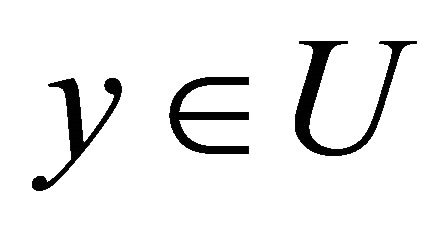 . Let ω be an (l + 1)-form on U. Then there is
. Let ω be an (l + 1)-form on U. Then there is
 (23)
(23)
Proof: We only substitute  in the above formula of Lemma 3.1. And with Equation (22), we finish the proof.
in the above formula of Lemma 3.1. And with Equation (22), we finish the proof.
Thus we finish the extension. It’s interesting to see if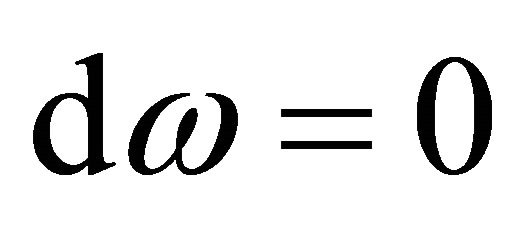 , then
, then . Hence with the formula above we have
. Hence with the formula above we have 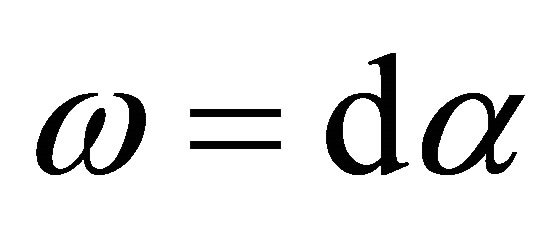 where
where  This is just the generalization of the converse of the Poincar’e Lemma in [3], which shows that closed form is an exact form.
This is just the generalization of the converse of the Poincar’e Lemma in [3], which shows that closed form is an exact form.
Corollary 3.1. Assume U is a domain in 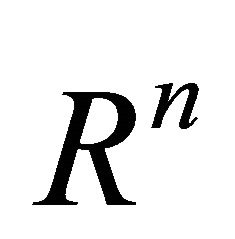 which can be deformed to every point
which can be deformed to every point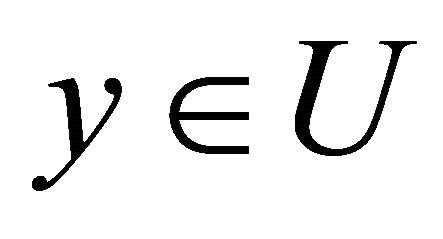 . If ω is a closed (l+1)-form on U, then it is an exact form. Then we can construct a homotopy operator
. If ω is a closed (l+1)-form on U, then it is an exact form. Then we can construct a homotopy operator  by averaging
by averaging  over all points
over all points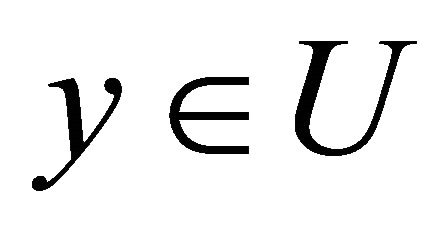 :
:
 (24)
(24)
where 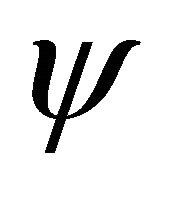 in
in 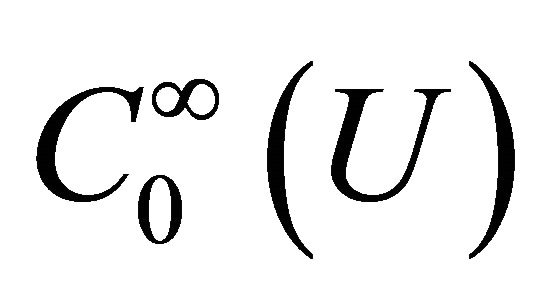 is normalized so that
is normalized so that
 It is obvious that the main result of this article remains valid for the operator T:
It is obvious that the main result of this article remains valid for the operator T:
 (25)
(25)
We begin with the equation of Lemma 3.1
 (26)
(26)
Multiplying  to it and integraling on U, we have
to it and integraling on U, we have
 (27)
(27)
Then with  we obtain
we obtain
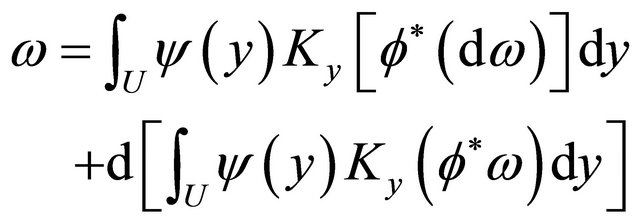 (28)
(28)
which yields the above formula.
4. Conclusion
We have obtained an extension of the Poincar’e Lemma for differential forms in a bounded, convex domain in Rn to a more general domain. Then we have extended the homotopy operator T to the domain defromed to every point of itself. So all of the conclusions about the homotopy operator T can be extended to the deformed domain.
5. Acknowledgements
The research of the author was supported by the Fundamental Research (2010) of NUDT (NO. JC10-02-02).
REFERENCES
- T. Iwaniec and A. Lutoborski, “Integral Estimates for Null Lagrangians,” Archive for Rational Mechanics and Analysis, Vol. 125, No. 1, 1993, pp. 25-79. doi:10 .1007/BF00411477
- H. Flanders, “Differential Forms with Applications to the Physical Sciences,” Dover Publications, Mineola, New York, 1963.
- P. R. Agarwal, S. Ding and C. A. Nolder, “Inequalities for Differential Forms,” Springer, New Mexico, 2009. doi:10.1007/978-0-387-68417-8
- M. Spivak, “Calculus on Manifolds,” Perseus Books Publishing, New York, 1965.
- J. Zhu and J. Li, “Some Priori Estimates about Solutions to Nonhomogeneous A-Harmonic Equations,” Journal of Inequalities and Applications, Vol. 2010, No. 520240, 2010, Article ID: 520240.
- S. S. Ding and J. M. Zhu, “Poincar-Type Inequalities for the Homotopy Operator with Lφ(Ω)-Norms,” Nonlinear Analysis: Theory, Methods and Applications, Vol. 74, No. 11, 2011, pp. 3728-3735.
- J. Zhu, S. Ding and Z. Tang, “The Reverse Holder and Caccioppoli Type Inequalities for Generalized A-Harmonic Equations,” Under Review.
- S. Ding, “Two-Weight Caccioppoli Inequalities for Solutions of Nonhomogeneous A-Harmonic Equations on Riemannian Manifolds,” Proceedings of the American Mathematical Society, Vol. 132, 2004, pp. 2367-2375. doi:10.1090/S0002-9939-04-07347-2
- S. Ding, “Local and Global Norm Comparison Theorems for Solutions to the Nonhomogeneous A-Harmonic Equation,” Journal of Mathematical Analysis and Applications, Vol. 335, No. 2, 2007, pp. 1274-1293. doi:10.1016/j.jmaa.2007.02.048
- M. Giaquinta and J. Soucek, “Caccioppoli’s Inequality and Legendre-Hadamard Condition,” Mathematische Annalen, Vol. 270, No. 1, 1985, pp. 105-107. doi:10.1007/BF01455535
- T. Iwaniec and G. Sbordone, “Weak Minima of Variational Integrals,” Journal of Reine Angew Math, Vol. 454, 1994, pp. 143-161.
- C. A. Nolder, “Hardy-Littlewood Theorems for A-Harmonic Tensors,” Illinois Journal of Mathematics, Vol. 43, 1999, pp. 613-631.
- C. A. Nolder, “Global Integrability Theorems for A-Harmonic Tensors,” Journal of Mathematical Analysis and Applications, Vol. 247, No. 1, 2000, pp. 236-247. doi:10.1006/jmaa.2000.6850
- C. A. Nolder, “Conjugate Harmonic Functions and Clifford Algebras,” Journal of Mathematical Analysis and Applications, Vol. 302, No. 1, 2005, pp. 137-142. doi:10.1016/j.jmaa.2004.08.008
- B. Stroffolini, “On Weakly A-Harmonic Tensors,” Studia Mathematica, Vol. 114, 1995, pp. 289-301.

